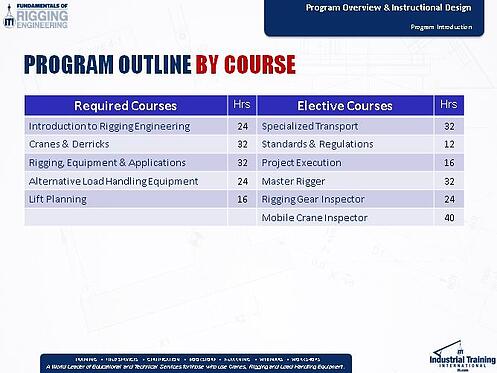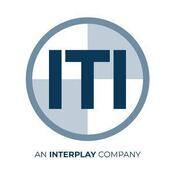Rigging Engineering by Hydraulic Skidding: What's in a System Type?
Horizontal load handling has been an art for a long time, even before the ancient Egyptians! In more recent years, it has become a science. A hydraulic skidding system, sometimes referred to as a jack and slide system, is a horizontal load-handling method that involves hydraulic cylinders pushing (or pulling) shoes that carry a load over a controlled friction surface.
"Skidding Systems" is a Lesson in the Fundamentals of Rigging Engineering Program taught by Don Mahnke, a rigging engineer and former SVP of Mammoet and co-founder of Engineered Transport & Rigging Company (ETARCO). Mr. Mahnke now owns Hydra-Slide, a manufacturer of hydraulic skidding systems. This Lesson is one of four Mahnke instructs in the Horizontal Load Handling Systems Module, which is part of the Alternative Load Handling Systems Course which contains four modules in sum.
Before your quiz, it's important to understand and visualize how these systems work. To give you an idea, the video animation (right) demonstrates a typical load handling activity - moving a transformer off of a railcar, on to platform trailers, with a skidding system.
Rigging engineers and lift planners find that these systems offer a rationale with several unique benefits including:
- The ability to move extremely heavy loads.
- No "external forces" are required, typically.
- Relatively simple setup.
- Strategically low height and safety advantages.
- Long equipment life and highly versatile.
Though, most rigging engineers will tell you that the main restriction of such units is that linear, or straight-line, horizontal movement is the only option.
Now, our main focus today is horizontal load handling system types, namely:
- High-Friction
- Low-Friction
- No Friction
We classify horizontal load handling systems into these three groups, or system types, because each classification is accompanied by its own challenges.
So, before you read further, tell me, which system type do you think hydraulic skidding systems falls into?
Once you have your answer, continue scrolling down to read on.
To give you some clues, as I alluded to previously, the system types are classified by subject-matter experts with a few specific traits:
- Force Requirements
- Holdback Requirements
- Guided vs. Unguided
- Push vs. Pull
- External vs. Internal
Here is a slide from the "Introduction & Major Engineering Considerations" lesson where Mahnke contrasts these traits across the three system types. You will notice that we have blocked out the "System Example" row so we don't give away the answer.

After reviewing this slide, you may have a better idea of which system type a hydraulic skidding system would fall into. You also may benefit by knowing that other system examples include rolling and air skate systems. Another clue: there is one unique trait in this table that should give you the answer - do you see it?
If you said, "High Friction", you'd be correct! This may seem counter-intuitive because the coefficient of friction of a skidding system is not really that "high". However, when you compare it to the various horizontal load handling options, it is actually much higher with a CoF of 0.10 to 0.20. Additionally, the trait that really gives it away is the "External vs. Internal" mode of force.
The mode of force is the "force generator" or equipment used to generate force to move a load. Ways to classify modes of force include push/pull and external/internal. Push and pull is rather straightforward - it is typified by the direction the force is being applied to the load, examples include a hydraulic cylinder pushing or a winch pulling a load.
Now, external and internal modes of force are also rather straightforward once you understand the definition. If the force applied to the load affects objects outside the system, say holdbacks or anchors attached to a column or a big piece of equipment, then we classify this as an external mode of force. On the other hand, if the force applied to the load is completely contained within the system like a hydraulic cylinder pushing a load while anchored by the system's runway, then we call this an internal mode of force.
holdbacks or anchors attached to a column or a big piece of equipment, then we classify this as an external mode of force. On the other hand, if the force applied to the load is completely contained within the system like a hydraulic cylinder pushing a load while anchored by the system's runway, then we call this an internal mode of force.
With these two ideas, or traits, we now know that a hydraulic skidding system should be classified as a high-friction system.
This slide might help clear things up a little bit when comparing all three system types.

Mahnke conducts four lessons in the Horizontal Load Handling Systems Module, which is contained in the Alternative Load Handling Equipment Course. Ahead of Mahnke, there aren't many people on earth who are better suited to learn from regarding horizontal load handling systems.
If you'd like to learn more about these lessons and others in the Fundamentals of Rigging Engineering Program.
About The Fundamentals of Rigging Engineering Program
Fundamentals of Rigging Engineering is ideal for lift planners, rigging engineers, and other key personnel who strategize and plan crane and rigging activities.
The Program Preview will outline the:
- Program Outline by Course
- Instructor Profiles
- Pricing Options
- Customers
- Supporters

To learn more, visit riggingengineering.com or call Christina Lanham, ITI Manager of E-Learning at 800-727-6355.




COMMENTS